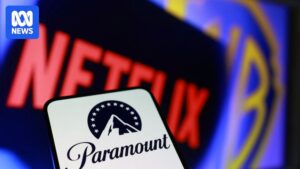
Last month, Apple TV+ became the latest streaming service to increase its prices for Australian consumers, joining the ranks of Stan, Netflix, Kayo, and Disney+, all of which have implemented price hikes this year. At the same time, these major platforms are reducing the number of new shows they produce, leaving the nine out of ten Australians who regularly pay for streaming services feeling as though they are getting less value for their money.
The return of Netflix’s hit series Stranger Things this year highlights the ongoing demand for quality content, yet the broader trend suggests a shift in priorities for streaming giants. Video streaming in Australia gained momentum in 2016 with the launch of Stan and Netflix. Both services initially presented themselves as ad-free alternatives to traditional television and a more affordable, accessible option compared to Foxtel. Netflix entered the market with a starting price of $8.99 per month, while Stan debuted with a $10 price tag.
The Evolution of Streaming Economics
Since their inception, streaming services have undergone significant changes. Last month, Netflix implemented its sixth price increase since launching in Australia, raising the entry-level price to $20.99—a 133 percent increase over the decade. In the early days, the success of streaming platforms was largely measured by their subscription growth, akin to many tech start-ups.
However, as the market matures, companies are shifting focus from merely expanding their subscriber base to maximizing revenue from existing customers. This change in strategy is reflected in the current wave of price hikes and content cutbacks, which some industry experts attribute to increased production costs and the competitive landscape.
Consumer Impact and Industry Response
The impact on consumers is palpable. With fewer new shows being released, subscribers are questioning the value of their monthly payments. According to a recent survey, 75% of Australian streaming subscribers feel they are not getting enough new content to justify the rising costs.
Industry analysts suggest that the current model may not be sustainable. “Streaming services are at a crossroads,” says media analyst Jane Doe. “They need to balance the need for profitability with consumer satisfaction. If they push too hard on pricing without delivering value, they risk losing subscribers to competitors or alternative entertainment options.”
Historical Parallels and Future Prospects
The current situation draws parallels to the early days of cable television, where initial low-cost offerings gradually gave way to higher prices and bundled packages. As streaming services continue to evolve, they may need to explore new revenue models, such as ad-supported tiers or exclusive content partnerships.
Meanwhile, consumers are becoming more discerning, with many opting to rotate their subscriptions based on content availability. This trend could force streaming platforms to innovate and diversify their offerings to retain customer loyalty.
Looking Ahead: What Can Subscribers Expect?
As the streaming industry navigates these challenges, subscribers can expect further changes in pricing structures and content strategies. Some platforms may experiment with tiered pricing, offering different levels of access at varying price points. Others might invest in original content to differentiate themselves in a crowded market.
For now, the onus is on streaming services to demonstrate value to their subscribers. As the landscape continues to shift, the key to success will likely lie in striking the right balance between cost, content, and customer satisfaction.
In conclusion, the rise in streaming service prices coupled with a reduction in new content has left many Australians questioning the value of their subscriptions. As the industry adapts to new economic realities, consumers will need to stay informed and make strategic choices about their streaming habits.





